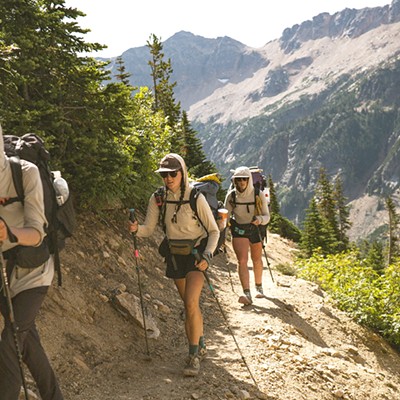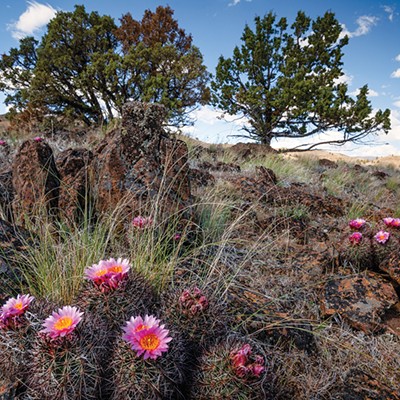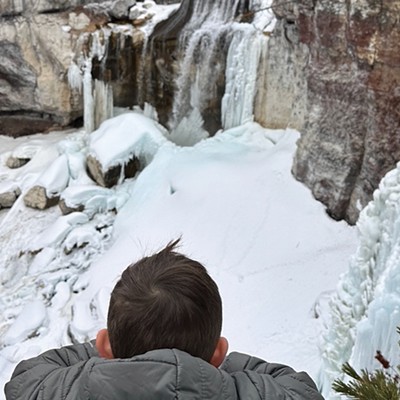Editor's note: Guest columnist Ryan Palo is a 5.14 climber who lives in Bend. This is his story of a recent harrowing climb.
When I was first introduced to the climbing world I was given some advice.
I was told that climbers begin their journey with two bags, one is full of luck, the other is empty, but as you go forward you empty the bag of luck and fill the empty one with experience. This wouldn't mean much to me until I left the safe confines of single pitch sport climbing.
My first couple of years climbing were crazy. I had reached into the bag so many times I was beginning to fear I was cursed with luck. Close calls were numerous, but the result was always the same, I returned to the ground safely. This would go on for years and eventually I lost my noobish ways, but I kept the cavalier attitude, which was only fed by my growing prowess on the stone. It's similar to how a teenager considers himself: invincible.
The problem was that it was a one-sided development. Can't do the section? More power. Off route? Plow forward. This worked time and time again, but I knew one day it would get me into trouble.
That day started out like most adventure days—lost and looking for the trailhead. This time my partner, Ryan Carrasco, and I were in the North Cascades, outside of North Bend, Wash., on Mt Garfield. Our goal was a "sport" route called Infinite Bliss, a 2,200-foot climb rated 5.10c.
As we stood at the base, staring up at 2,200 feet of granite slab climbing, I was not surprised to see two parties already high on the face. Undeterred by this, we decided the best course of action was to simul-climb until we ran out of draws. I racked up 40 quickdraws and stepped onto the stone.
I knew almost immediately that I was unprepared for this. This feeling was only intensified by my realization that this route was not really a sport route. It was an endless slab with the occasional bolt. Each pitch was roughly 150 feet and featured only two or three bolts. So at any point if either of us were to slip, we were looking at a 60-foot slab tumble.
The first 1,500 feet was rather uneventful. The other parties let us pass, route finding was a cinch, and the stone was immaculate. I was certain we'd be up and down in a matter of hours.
Then we reached the point where most parties turn around, a half-mile wide by 600-foot tall section of 5.0 climbing with no obvious route. The only discernible features of this section were two small shrubs. With a great sigh, I pushed on into the maw.
The climbing was simple. The difficulty came in navigating the endless sea of removable handholds, knowing that a slip meant a 230-foot tumble. I reached an uninspiring bush that would act as our belay for the remainder of the "Death Slab" and belayed my climbing partner up.
I was happy to hand off the next section. It was more of the same. No gear. No bolts. Choss galore. What we didn't know at the time was that I had traversed a hundred or so feet from the actual route, which we would only come to realize when my partner reached the end of the rope.
Rather than climb down 230 feet, Ryan gave me a meat belay, backed up by a small pile of rubble he had slung.
The remainder of the "Death Slab" section was uneventful. We got back on route and tackled the final 600 feet. The climbing was harder, but well protected. The difficulty at that point was not the climbing, it was jamming my blistered feet into climbing shoes. By the time we had reached the summit block, we could no longer stand barefoot, which only made the prospect of rappelling 22 pitches less appealing.
We had two hours to rap 2,200 vertical feet before nightfall. "Not impossible," I told myself.
Rappelling down slabs is not as easy as one might think. You have to take into account the endless rope tangles, route finding, and rope management techniques. Our one consolation as we descended into darkness was a sunset that only an active fire season could produce.
Among the items we had neglected to bring (jackets, enough water, slings, etc.) were two headlamps and two helmets. This would greatly impede our progress. Our method was for me to rap first and upon reaching the belay look up to help my buddy navigate the sea of choss, putting me directly in the rock fall zone. Each time I rappelled I had to swing a hundred feet in either direction in order to find the next belay station. Each time I was certain I would miss it. Luckily that only happened twice.
Seven hours after we summited, we reached the ground. Of the 22 rappels, 15 were in total darkness. Miraculously, we avoided dislodging any loose blocks onto the unsuspecting parties below.
Every time I go out and pretend I'm not a sport climber, I pay for it. I'm not sure if it's willful ignorance, bad luck, or some combination thereof. What I do know is that I'm done grabbing from the luck bag, and learning to pull more from the bag of experience.
Going big in the North Cascades.




















